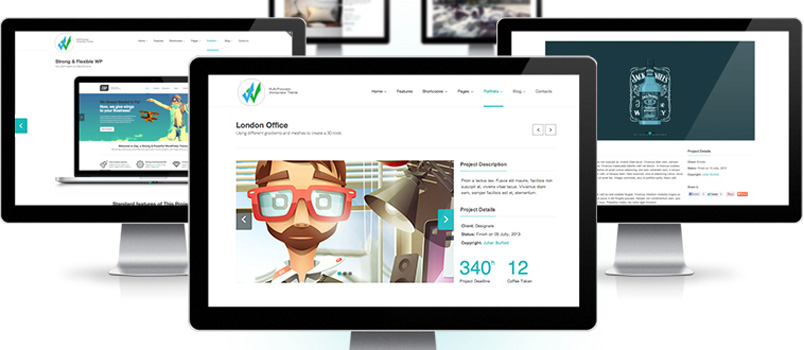When most companies develop and design a website, they only focus on the surface-level details. And though aesthetics certainly play an important role, a website’s success goes far deeper than that. You need a comprehensive and strategic plan that allows you to connect with the right audience, engage with them, and move visitors to action.
Not sure where to start? Here are a few tips and factors we’d highly recommend:
1. Create Detailed Customer Personas
It’s impossible to develop a successful and high-converting website if you don’t understand who your target audience is and what they want. And the best way to clarify this is by creating detailed customer personas.
Customer personas are basically fictional biographies that you create based on actual insights that you have regarding your audience. In other words, you take what you can glean from Google Analytics, social media, and customer service records and fill in the details to create an ideal target customer who is indicative of your larger audience.
Here’s a quick guide to help you create detailed customer personas that clarify your web design, marketing, and content strategy. For best results, create at least two different customer personas. This will give you some clear direction for how to proceed.
2. Identify Your USP
Once you’ve identified your customer personas, it’s time to get clear on what your competitive advantage is. In other words, what’s your unique selling position, or USP?
Your USP is the single-most compelling benefit your company offers. It’s what sets you apart from the competition and gives people a reason to transact with you (rather than the dozens of other competitors).
Your USP will dictate your web design and copy. Without clarity in this area, you’ll end up with a generic website that fails to resonate with the right people. In other words, your web design will fall flat.
3. Document Your Brand Style
According to Active Web Group, a Long Island web design company, consistency plays a key role in designing a high-converting website. And one of the ways you achieve this consistency is by documenting your brand style so that you’re able to adhere to a strict style.
A brand style guide should consist of all logos, colors, fonts and typography, voice, and other relevant details. Once you have this style guide in place, you can easily hand it off to a web designer or developer and never have to worry about visual inconsistencies watering down your brand.
4. Focus on the Basics
Complex is rarely (if ever) better. If you want to develop an impressive website that converts at a higher-than-average rate, strip it back to the basics. Quality is far more important than quantity (of elements or pages).
As a general rule of thumb, the fewer pages you can get away with creating, the better. This streamlines your website, reduces navigation-based confusion, and allows you to devote more resources to perfecting the content/design you do have.
5. Give Yourself a Strong Content Foundation
While not technically a design element, strong content is a foundational component of any successful website. Though there’s plenty of time to add valuable content later, starting with some evergreen assets will give you a solid starting point.
6. Identify and Track the Appropriate KPIs
You might think you have an impressive website, but is it actually performing up to your expectations? The only way to know is to track key performance indicators (KPIs) so that you’re able to evaluate performance on an ongoing basis.
“While most websites share the goal of generating revenue, the conversion process is different for each,” entrepreneur Alice Stevens writes. “I recommend understanding your conversion process and goals first. Then, choose metrics that best illustrate the success of each conversion step and revenue.”
Having said that, there are certain KPIs that prove useful across the board. They include metrics like sales, signup/leads, visit-to-signup rate, bounce rate, unique visitors, sessions, and average session duration.
Adding it All Up
Developing a successful website requires more than trendy visuals and sleek layouts. If you want to deliver maximum impact, you must develop a comprehensive strategy that helps you articulate who your brand is, your goals, and how you can connect with the right people to move them through a desired series of actions from awareness to purchase. Good web design will help you do this.































